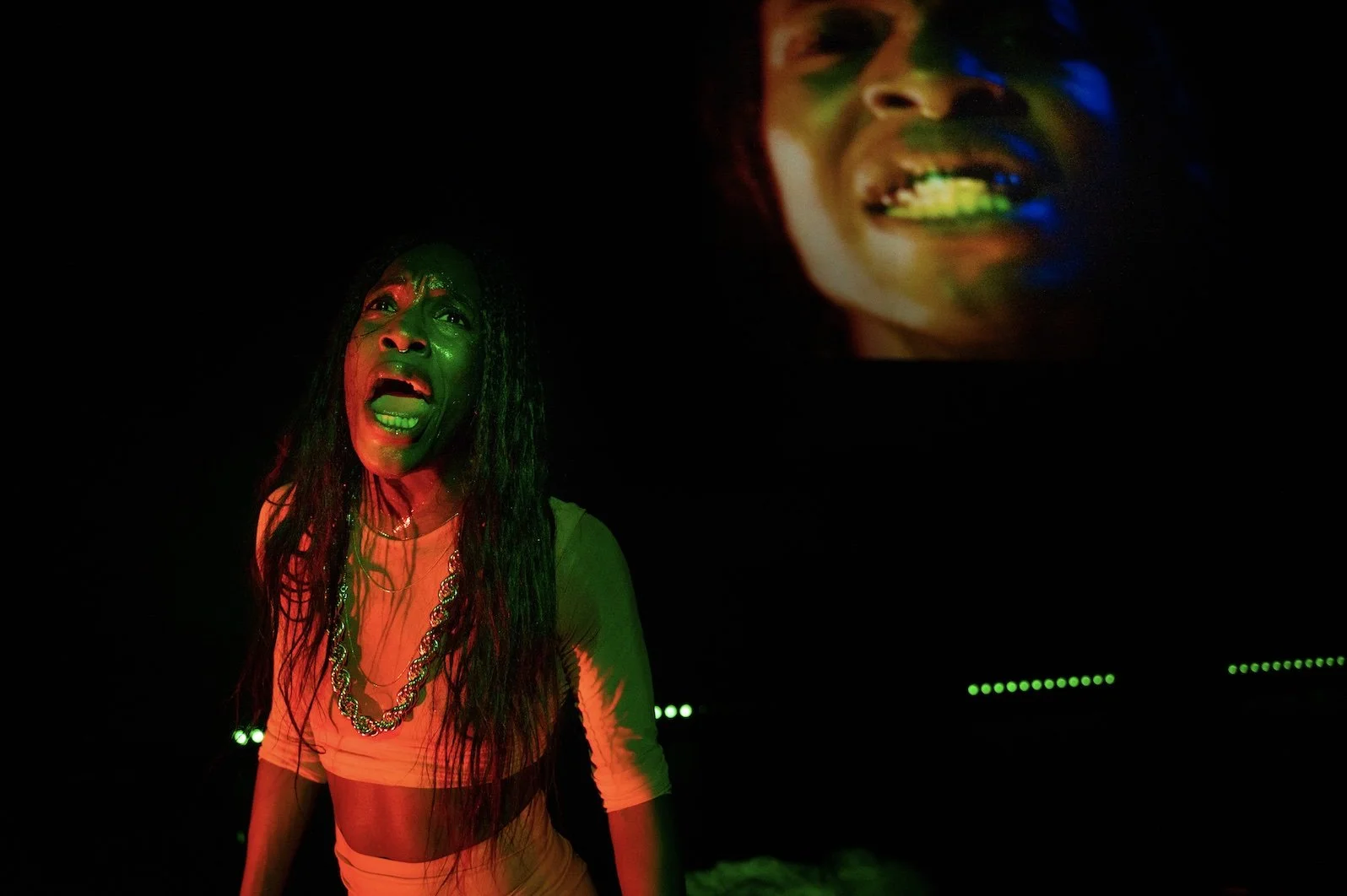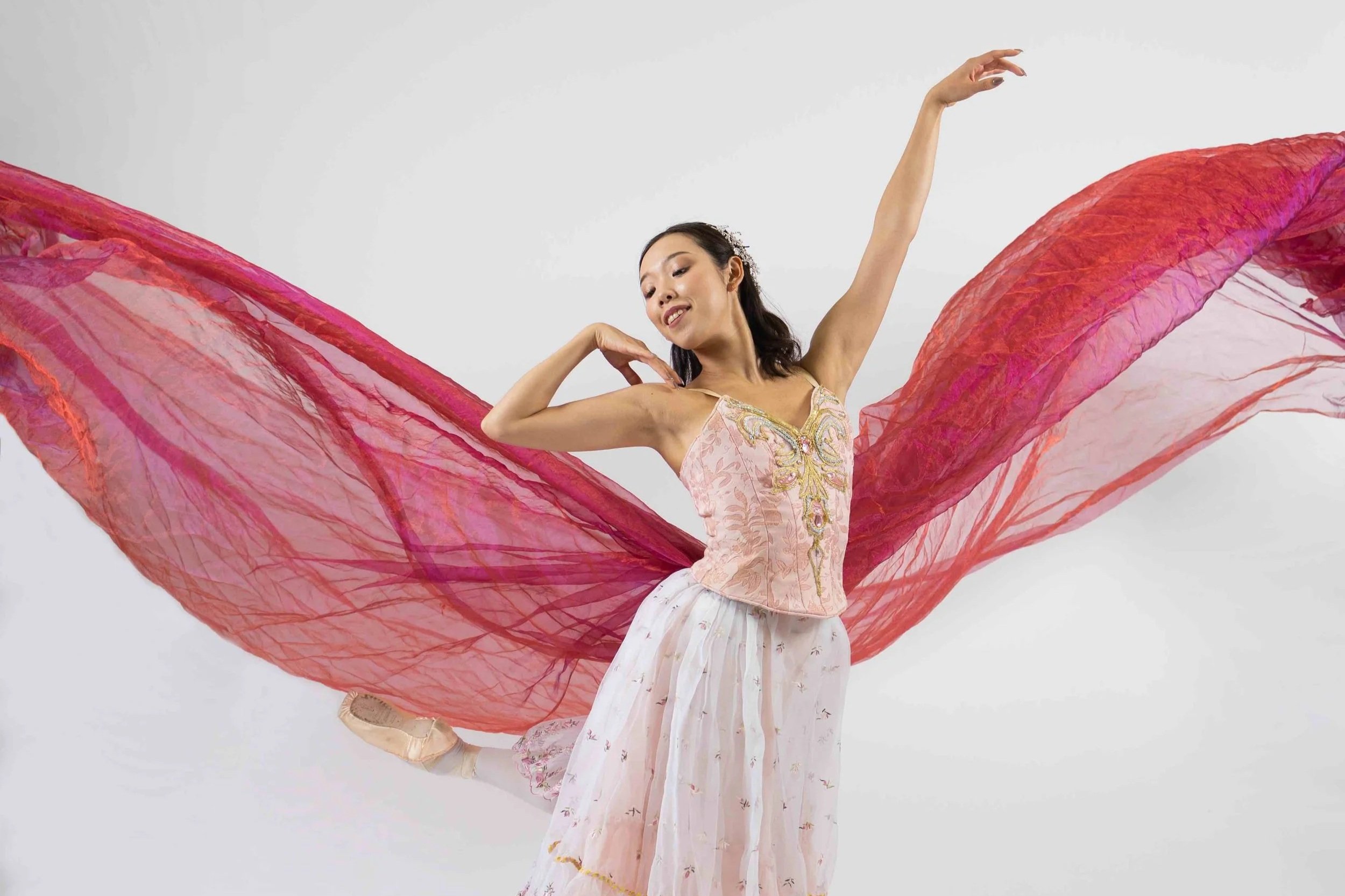Vancouver dance artist Serge Bennathan remembers Joe and the influential choreographer who made it
Jean-Pierre Perreault’s grand Kafkaesque spectacle has aged well, speaking clearly to the COVID era
From the tightly controlled formations to the hats and long coats, Joe seems to capture a lot of the Kafkaesque mood of this pandemic era. Photo by Robert Etcheverry
Dancehouse presents Joe as part of its DIgidance series, from March 17 to 23
AMONG THE MANY words used to describe late choreographer Jean-Pierre Perreault’s dazzling dancework Joe, “Kafkaesque” is one of the most apt.
Bedecked in anonymous fedora hats and long coats, its 32 dancers scramble up and slide down a raked stage, caught endlessly in a struggle to escape conformity and control.
That idea hits home right now with veteran Vancouver-based dance artist Serge Bennathan, who was involved in a filmed production of the piece that will stream on DanceHouse’s Digidance series this week. One of the measures of a dance work is how well it can speak to universal truths, no matter when it’s shown. And for the past pandemic year, humanity has been trapped in a nightmare straight out of a Franz Kafka short story—or a large-scale Perreault spectacle.
“It's so interesting to see Joe in the times we are living in now—how much, as a crowd, we have to obey: ‘Don’t go out. Wear your mask,’” he tells Stir. “The time we’re living in is Kafkaesque!”
But Bennathan stresses it is the moments of tender human emotion that break out from this tight world that truly reflect what has happened during lockdown.
“When people started to go out on their balconies and applauded the nurses and so on; when suddenly some of the individuals started to say ‘Thank you’: Joe is this!” he says of last year’s 7 pm pot-banging rituals. “You can’t go out, and so you find a way to go out on the balcony: Joe is this! It’s so contemporary.”
Serge Bennathan
Bennathan’s relationship to Joe’s choreographer goes back several decades. The France-born and -trained artist’s path first crossed with Perreault’s when Bennathan immigrated to Canada in 1985—a year after Joe premiered on stage. Bennathan went on to join Ottawa’s contemporary-dance hothouse Le Groupe de la Place Royale, then run by Peter Boneham, who had founded it with Perreault. By then, though, Perreault had left to start his own company and teach in Montreal, but his influence carried on strongly at Le Groupe—and across the country’s dance scene.
Joe had helped launch an incredibly influential decade of contemporary dance coming out of Montreal. Perreault shared a booming scene with innovators like Marie Chouinard, La La La Human Steps’ Edouard Lock, O Vertigo’s Ginette Laurin, and Paul-André Fortier.
“The big thing for me, the reason why there was this richness, was because in Quebec, culture is the flag of Quebec,” observes Bennathan. “It’s the way to put your identity out there, and that's what created such a rich ground—because as soon as someone came out, it was supported.” That funding then grew to feed works of the grand scale of Joe and other Perreault works.
As for Bennathan, after Ottawa, he spent a brief period here in BC—creating works like the indelible In and around Koszla Street for Ballet BC—then headed back east to helm Toronto’s Dancemakers from 1990 to 2006. And it was there, in 1994, that his dancers, as well as those from Winnipeg Contemporary Dancers, were invited to take part in a remount of Perreault’s Joe that would be filmed for a Radio-Canada broadcast (the one that originally hit the airwaves in 1995 and that will be streamed here).
Bennathan, who had long admired the work of Perreault, who he knew as a colleague and acquaintance, jumped at the opportunity for his troupe.
“I really wanted my dancers to experience this kind of work that didn't exist in Toronto,” he explains.
Bennathan, whose work was rooted in Europe but also in the expressive freedoms nourished at Le Groupe, felt a kinship with Perreault’s style. Their style was very different, but they shared what Bennathan calls “a groundedness, a physical emotion” that contrasted the North American modern traditions that dominated English Canadian dance scenes at the time. Interestingly, Bennathan and Perreault are both visual artists as well. Most of Perreault’s works, including Joe, started as drawings.
Bennathan adds that Ginelle Chagnon, the repetiteur who Perreault entrusted with overseeing the remount, was part of the draw. “I knew Ginelle would bring an incredible, incredible amount of knowledge to my dancers that I knew would later come to my work also. It was a way to enrich the dancers,” he says.
Bennathan is still effusive about Joe, a piece that brings pummelling demands as the dancers stamp out a driving rhythm in their work boots (see the video below). “You feel this incredible physicality, where the dancers have to always be present in their body—even when they are still,” Bennathan marvels.
But he stresses the work manages to be fragile and deeply human at the same time.
“What I love about Jean-Pierre’s work, and about Joe, is how there’s this huge contrast: there’s this form of darkness but at the same time a huge tenderness. It’s the little details that make the piece so tender,” he explains.
“I think because he was a painter, it is like when you look at an artwork: somewhere in the painting you have a little detail and it’s in this little detail where the work explodes. It creates the vibration.”
Perreault’s total approach to his work—from the score to the sets, lights, and costumes—was also ahead of its time.
“He brought a different visual space, a sound space and a paysage [scenic] space,” he explains. “These three different ways together brought a new way for the public to look at dance. You’re almost looking through the dancer, almost being transported by the dancers. That’s why there’s an anonymity on stage, with the long coats and hats. For me it was really the first time to look at dance in this way.”
Dance is the most ephemeral art form, and this week’s online broadcast offers a rare chance to look back, and appreciate, one of the key works in the Canadian scene—and at an era that, in many ways, had come to an end by the time Perreault succumbed to cancer in 2002. An exciting new generation has exploded out of Montreal in recent years, but it’s important to look at who blazed the trails before them.
For his part, Bennathan thinks Perreault would be happy to see his work live on—and especially that Chagnon, to this day, still works to preserve his unique vision.
And for Bennathan, who today creates pieces that meld writing, art, and dance through his Vancouver-based Les Productions Figlio? Having come out of the same rich period as Perreault, does he ever look back and think about the impermanence of his work, or worry about capturing it on film for future generations?
“I don't at all,” he says without hesitation, then adds with a small laugh, “I don't even have archives of my work. I want to create. My pleasure is when dancers who have worked with me still talk about what it meant to work with me. Creation is just a stone on which I step.”














